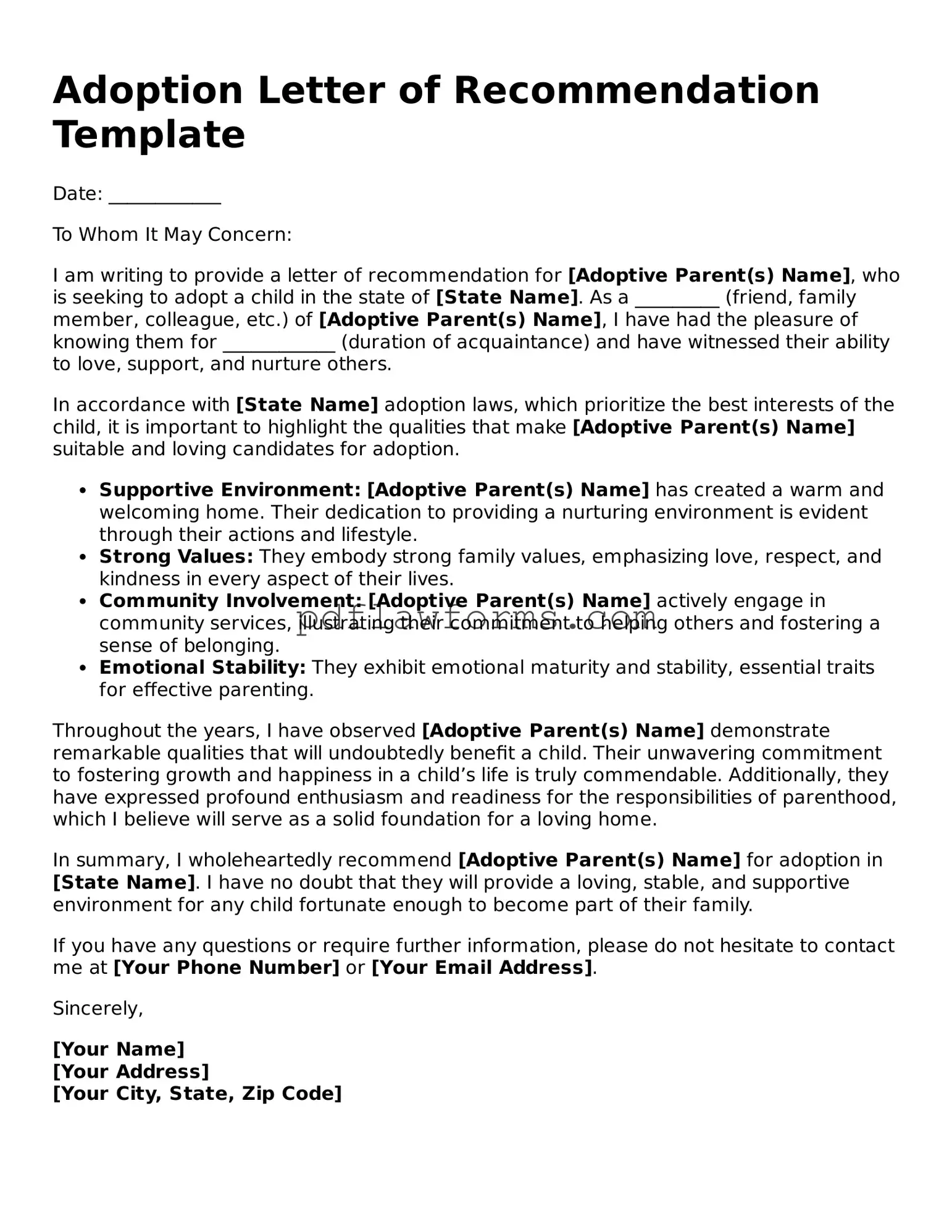Filling out an Adoption Letter of Recommendation form can be a crucial step in the adoption process. However, many people make common mistakes that can hinder their recommendation's effectiveness. Understanding these pitfalls can help ensure that your letter serves its intended purpose.
One frequent mistake is providing vague or generic statements. When recommending someone for adoption, it's essential to include specific examples of the person's qualities and experiences. Instead of saying, "They are a good person," explain what makes them a good person. Perhaps they have shown kindness by volunteering at a local shelter or have a nurturing nature that shines through in their interactions with children.
Another common error is failing to address the specific qualities that make the individual suitable for adoption. Each adoption case is unique, and recommendations should reflect that. Discussing the applicant's parenting skills, emotional stability, and ability to provide a loving environment is vital. Omitting these details can leave the reader questioning the candidate's readiness to adopt.
Many people also neglect to proofread their letters. Spelling and grammatical errors can detract from the professionalism of the recommendation. A well-written letter demonstrates care and attention to detail. Taking the time to review the content can make a significant difference in how the letter is perceived.
Some recommenders mistakenly focus too much on negative aspects. While honesty is important, emphasizing flaws without providing a balanced view can be detrimental. Highlighting both strengths and areas for growth presents a more accurate picture of the individual and helps the reader understand their potential as a parent.
Another mistake is failing to tailor the letter to the specific adoption agency or court. Each organization may have different requirements or preferences for recommendations. Not aligning the content with these expectations can result in a less impactful letter. Researching the agency's guidelines can help ensure that the recommendation meets their criteria.
Many individuals forget to include their relationship to the applicant. Clearly stating how long and in what capacity you have known the person adds credibility to your recommendation. Without this context, the reader may struggle to gauge the depth of your insights.
Additionally, some recommenders make the mistake of being overly emotional. While it's natural to feel passionate about the subject, maintaining a professional tone is crucial. An overly sentimental letter may come off as insincere or exaggerated. Striking a balance between emotion and professionalism will create a more compelling recommendation.
Lastly, failing to sign and date the letter can render it incomplete. A signature not only authenticates the recommendation but also adds a personal touch. Including the date shows the timeliness of the recommendation, which can be important in the adoption process.
By avoiding these common mistakes, you can create a thoughtful and effective Adoption Letter of Recommendation that truly reflects the applicant's suitability for parenthood.
